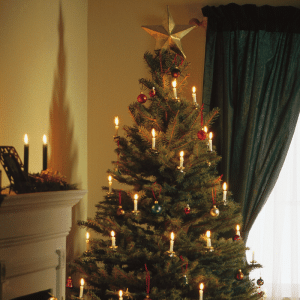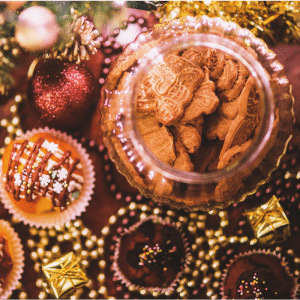Christmas Traditions
The holidays can seem to be a very daunting and stressful time at the end of the year. The last minute shopping, food preparations that we're not accustomed to, scheduling of activities and the level of constant activity can be exciting, but it can also become overwhelming. There are generally certain people within family or friend groups that act as the glue and the organizers of the events. For these people, especially, it can feel as if the work is never-ending. But, are the traditions that we engage in in the 21st century more stressful and labor intensive than those in the past? Didn't they have a “simpler” life with traditions that were not as intense as ours? Wouldn't it be wonderful to go back to the way that they used to celebrate Christmas and not have all of the extra stress? Hmmm...maybe, but maybe not.
In the modern era, we can get away with beginning Christmas preparations a few weeks in advance and fit in all the planning, decorating and wrapping in the evenings around our work schedules. In previous times, however, it often took several months to prepare for a Christmas holiday. If you wanted to take a day off in order to relax with friends and family, it took much advance thought in order to do it.

If you wanted to give gifts at Christmas, you'd first need to make them. Wooden toys were often made to give to children. Clothing would be sewn by hand, sometimes even woven by hand before it was sewn. Outerwear like mittens, scarves and hats would be knitted or crocheted. Very few things were bought for gifts, but if they were, there was always an exchange of much labor in order to earn the money necessary to buy them.
Trees and greenery were gathered from the woods to decorate. But all of the decorations would be made by hand. Dried fruit garlands, pine cones, paper decorations, etc. were used to intersperse with the greenery to make things look more festive. Candles were also made in advance so that you could place them on the trees and throughout the house. A yule log was seasoned years in advance, but if you were able to procure one far in advance, you could use a large one for several days and wouldn't have to haul so much wood to the fire during the holiday celebrations and would have more time for relaxing!
Christmas cards were often handmade by the lower classes, and always handwritten. This seems like a lot of work to some of us today, but in those days it was a time saving device, since they would then not have to write an entire letter, rather a quick note of well wishes.
So while we may feel pressed for time and stressed at the prospect of all that we have to do during our holiday season, it is important to remember to continue in gratitude that there are some of these things that we do not have to do by hand. If we enjoy that type of thing, we can still indulge in doing it by hand, but it is not mandatory. We have the choice to make it a little less stressful. We also have the choice to begin thinking of what will be necessary earlier in the year. If the Victorians could begin preparations in the spring of the year, we can begin a couple of months before! And may you have a Merry Christmas!


